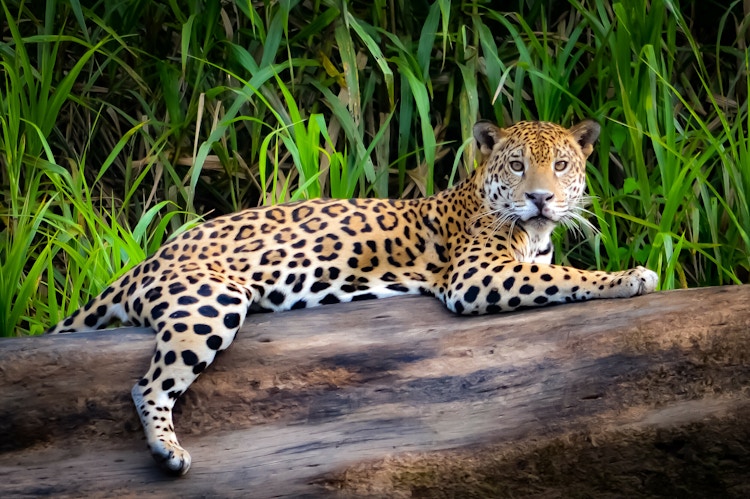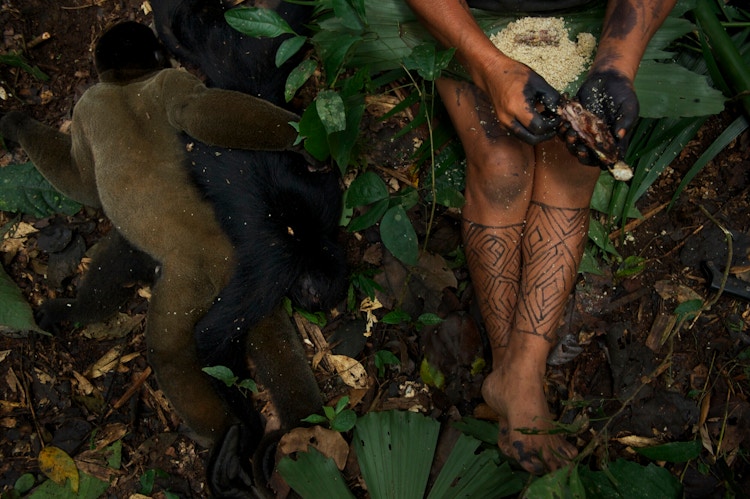
The right to not be contacted
There are still some people on Earth who live free from contact with the global world. Their home, in the most remote areas of untouched rainforest, is now under threat.
Located in the western and most remote part of the Amazon rainforest, in the border region of Peru and Brazil there are areas of world heritage proportions. Two large tracts of almost entirely untouched rainforest, an area the size of the UK, harbor biodiversity in its richest form and is the world’s largest territory inhabited by indigenous peoples in voluntary isolation. Both of these areas are under rapidly escalating pressure from a series of legal and illegal activities, including mining, logging and infrastructure development. The encroachment on these lands will affect both biodiversity and global climate as well as the existence of thousands of indigenous people in isolation. Neighboring indigenous groups are working to protect the areas from intruders and gain official protection of the territories. Rainforest Foundation Norway is supporting this initiative in Peru and Brazil.

Peruvian Amazon Photos: Wolter Silveira
Living in isolation
Dozens of identified and unidentified groups of indigenous people live in two large tracts of rainforests in the border areas between Peru and Brazil.Having decided not to establish contact with the society that surrounds them, indigenous peoples in isolation are completely autonomous groups. They are not familiar with, nor integrated into the culture, laws and regulations of the nation state they happen to be located within.
Living in perfect harmony with nature, they may also be the world’s most vulnerable people. Any major damage to the environment they depend on, may lead to starvation or forced migration. They live free from most viral diseases and have not developed immunologic resistance against diseases like the common flu. History has shown that any contact situation with the outside world will almost certainly lead to mass deaths.
Having been chased by missionaries, government officials and economic interests, it is now an established understanding that the best way to protect indigenous people in isolation is guarantee their right of no contact. Both Brazil and Peru have since the early 2000s had a no contact policy and isolated indigenous peoples’ right to life and health, culture, land, and self-determination is enshrined both in national laws and in national and regional human rights declarations.

Faced with the pressures threatening isolated indigenous peoples, indigenous organizations have taken on their defense and protection, by promoting legal security and protection of these areas.
Beatriz Huertas, RFN advisor and world leading expert on indigenous people in voluntary isolation.



Arial photos of isolated peoples in the Brazilian Amazon. All photos: Gleison Miranda/FUNAI
Natural wonders
What makes the quality of these ecosystems exceptionally high, is these vast areas of undisturbed forest, not fragmented by infrastructure or commercial exploitation. The contiguous forests foster some of the keystone species in the Amazon rainforest, such as the jaguar, which needs large areas to roam. Sustainably managed by indigenous peoples for generations, these areas of the Amazon are some of the most biodiverse lands on Earth. The carbon sequestration in these two corridors of forests, combined covering 25 million hectares of intact forest, is significant for combating climate change. The carbon dioxide captured in the above-ground biomass is at least 13 billion tons, which equals the amount of CO2 the United States emits into the atmosphere over 2,5-years.
The indigenous peoples’ historical presence and close relationship with their natural surroundings are the very reasons for the continued existence of these two vast and well-preserved rainforest areas today. Thus, securing their core human rights is synonymous with conserving the rainforest ecology.

Jaguar (Panthera onca) Photo:Shutterstock
Escalating threats
Parts of the two pristine forest corridors consist of formally designated land categories, most of which are indigenous territories, some are national parks. However, substantial parts of the corridors are also covered by hundreds of logging concessions and large areas still lack formal protection of any kind.
An intricate web of threats toward the areas are advancing, both from illegal activities, such as logging and drug traffic, as well as infrastructure projects and extractivist concessions for oil, gas and mineral mining. Christian missionary activities are still a prevalent problem. In both Brazil and Peru, laws which threaten to open indigenous lands for commercial activities are under discussion in both parliaments.

Through the protection of the corridors, the aim is both to protect the peoples in isolation and in initial contact, as well as to strengthen and improve the quality of life of the communities and indigenous peoples living around them.
Beatriz Huertas, RFN advisor and world leading expert on indigenous people in voluntary isolation.

Photo: Johan Wildhagen
Grass root buffer zones
How do we know about indigenous people in isolation, if no one is allowed near them?
What is known about people in isolation is largely gathered from surrounding indigenous groups, and relatively recently contacted people. Surrounding indigenous groups observe the isolated peoples movements, and many of these groups regard it as their responsibility to protect their existence.
Dozens of local communities that inhabit the outskirts of the corridors and thus form a buffer zone from intruders. Most of these are indigenous communities, while some are non-indigenous that use and depend on the forest in similar ways.
Many of these forest communities lack access to basic welfare services, and see little opportunities for accessing markets and sustainably managing their territories. The communities are vulnerable for exploitation by loggers, miners, ranchers, palm oil companies and road constructionists. Many also experience invasions, both legal and illegal, by these same actors but lack the means to stop them.

We as indigenous organizations are very interested in defending the people in isolation, it is our duty because they are our brothers and sisters. We are shouldering this burden because we believe we can do a lot for them. They also need to live as they want, we want to improve the conditions so that they have a large territory where they can move freely and safely.
Apu Francisco Hernandez, President of the Federation of Ticuna communities in Baja Amazonas and part of the political platform to defend indigenous people in isolation.
Rainforest Foundation Norway supports these local communities in securing their tenure rights and in implementing their own local management plans. With decades of experience, Rainforest Foundation Norway will support the development of additional tools necessary to govern, manage, and protect their forest territories in a way that can generate livelihood opportunities and local progress without destroying the forest environment, and at the same time maintaining their culture and ethnic identity.
ORPIO is one of Rainforest Foundation Norway’s partner organisations in Peru and one of several indigenous groups working to protect indigenous people in isolation.
Rainforest Foundation Norway supports grass root alliances
forming in the buffer zones surrounding the corridors to strengthen the
defense against intrusions and destruction of the area.
The initiative advocates for both countries to adopt the protection of these corridors. Sustainable development of the local communities that form the buffer zone is a key measure to fulfill international commitments and contributions to both the Paris agreement, Aichi Biodiversity targets, 30 x 30 agenda and human rights as well as the pledge renewed at COP26 to end deforestation by 2030. To achieve this, the protection of the corridors must be incorporated into the national budgets and be a priority for governmental policy.
What we do
For the past 20 years, Rainforest Foundation Norway has been working to document the existence of Indigenous groups who live with little or no contact with the outside world in the vast and rich forest areas across Peru and Brazil.
- To prevent illegal encroachment into territories of Indigenous people in isolation , we have contributed toward the establishment of five protected areas. We're working with Peruvian and Brazilian organizations to expand these areas into a larger, cross-border protected zone.
- We are fostering dialogue and alliances between different communities. Surrounding Indigenous peoples and local communities want to protect the isolated groups. We help facilitate the creation of a cross border initiative of over 50 local indigenous organizations to create a unified conservation plan, strengthen our advocacy efforts towards authorities.
- We have established checkpoints to deter illegal activities. Through collaboration with local organizations, we've set up checkpoints that have proven effective in reducing illegal logging. These checkpoints are staffed by trained local community members who monitor, report, and prevent illegal activities.
- We are raising awareness about the consequences of illegal activities. We're educating Peruvian and Brazilian populations and authorities about the severe impacts of logging, oil extraction, and illegal fishing on vulnerable Indigenous communities.
- We are advocating for stronger government action. We're working to influence authorities to cancel existing concessions and implement stricter laws to prohibit natural resource extraction, such as oil, logging and gold. We're also pushing for adequate resources and mandates for government agencies to combat environmental crimes.

RAINFOREST: Peruvian Amazon. Photo: Wolter Silveira

Nicolas Delaunay
External Relations Director
(+47) 457 39 480
nicolas@rainforest.no

Ines Luna Maira
Head of Institutional Partnerships
(+47) 452 48 654
ines@rainforest.no



